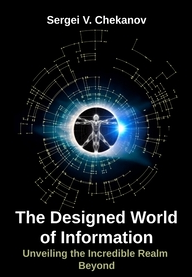How 3D Medical Animation Impacts the Medical Industry
October 28, 2024 - Reading time: 12 minutes

The human body is complex in its form and functions. This sometimes makes it difficult to convey information relating to our health.
However, with modern technology, virtual reality has come to stay as a core part of every industry, medicine included. More medical professionals realize the benefits of employing 3D medical animation in areas of research, marketing, education, and patient communication.
3D animation is the process of making digital objects come alive by creating a semblance of movement through three-dimensional space. 3D animation was originally used mostly in video games, television, and animated films. Today, 3D medical animations are being used in hospitals, medical schools, laboratories, and research facilities to improve communication and healthcare delivery.
In this article, we will examine the impacts of 3D medical animation on the medical industry.
Why 3D Animation Beats Other Forms of Visual Communication
One of the strongest advantages of 3D animation over other forms of visual communication is its ability to show movement. 3D animation videos allow you to demonstrate exactly how a process or machine works.
You can make the videos go faster or slower; you can zoom in to show intricate details. Objects move, turn and rotate like real-world objects. This allows you to view objects from all sides. You can dismantle a machine to show what it looks like inside.
3D animation videos also allow you to create imaginary scenarios to demonstrate a procedure or even show how an illness affects an individual.
To be effective and captivating in conveying information, a medical 3D animation needs to have a well-researched and written script, an interesting outline, and feature film quality that is well designed.
This can be achieved by engaging the services of a 3D animation studio that will ensure you get 3D medical animation videos that meet your needs and makes passing information easy. A well created 3D animation will be able to project movement and expressions in a way that makes it believable. The drawings must also be solid and appealing.
7 Impacts of 3D Medical Animation on the Medical Industry

1. Easy Understanding of Complex Procedures
Most patients find it difficult to grasp information relating to complex medical processes. As a result of this challenge, a lot of patients are incapable of asking the right questions and often leave decisions about their health to doctors.
Patients sometimes decline or delay consent to new medical procedures or medications simply because they do not understand the process or the importance of the medication.
With 3D medical animation, patients can now get to see demonstrations of how certain procedures work. This enables them to make more informed decisions and to be more proactive about their health.
2. Better Retention of Information Humans are visual beings.
3. Provision of Virtual Medical Services
With 3D medical animation, it has become easier for patients to access medical services without visiting the hospital. This is especially important for patients who are terminally ill. It also works great for patients preparing for surgical procedures.
They can get all the information they require, learn how the process works, and be adequately prepared before arriving at the hospital for the actual procedure.
4. More Active Engagement
People generally engage with information better when they can see what you're talking about. Especially with 3D medical animation that allows movement. Patients pay more attention and respond better to the information being received.
This helps to improve doctor-patient communication. This works really well for doctors who handle young children. Because of the captivating visuals, 3D animations are entertaining. This helps to increase their interest in the information and promotes response and feedback.
5. Effective Marketing
Marketing in medicine can be a challenge. It can often be difficult to communicate technical information and processes to stakeholders and the general public. Investors might not have the in-depth knowledge to understand medical terms.
With 3D medical animation, it is easy to show and tell at the same time. This has made medical marketing less daunting, and convincing investors is now so much easier.
6. Education and Training
7. Research and New Technology
A lot of the time, funding requests for medical research are declined simply because stakeholders cannot understand what you intend to do. Even with repeated explanations, it is often difficult to get them to see the picture.
With 3D medical animation, you are able to clearly demonstrate how the process will work or show the inner functioning of a machine.
Also, introducing new technology is now easier with 3D medical animation. Being able to see what it looks like and how it functions improves interest and the rate of adoption of new technology.
Conclusion
While the goal is not for 3D medical animations to replace person-to-person communication, they help to facilitate. Especially when it has to do with complex information. And the good news is you do not even need to have any prior knowledge about animations to start using them.
A medical 3D animation company can get you set up and started. Compared to a few years ago, great improvements have been made in 3D medical animation technology, and there's a promise of even more advancement. This will ensure that provision of healthcare keeps evolving.
by Daniel Martin
Bio: Dan has hands-on experience in digital marketing since 2007. He has been building teams and coaching others to foster innovation and solve real-time proble
ms. Dan also enjoys photography and traveling.
Author Image : https://drive.google.com/file/d/1oLun6t92N8ELa7OF6ojt52nogApCyVgo/view
Linkedin: https://www.linkedin.com/in/adanielmartin/
Twitter: https://twitter.com/danielmartin_a
Facebook: https://www.facebook.com/a.danielmartin
